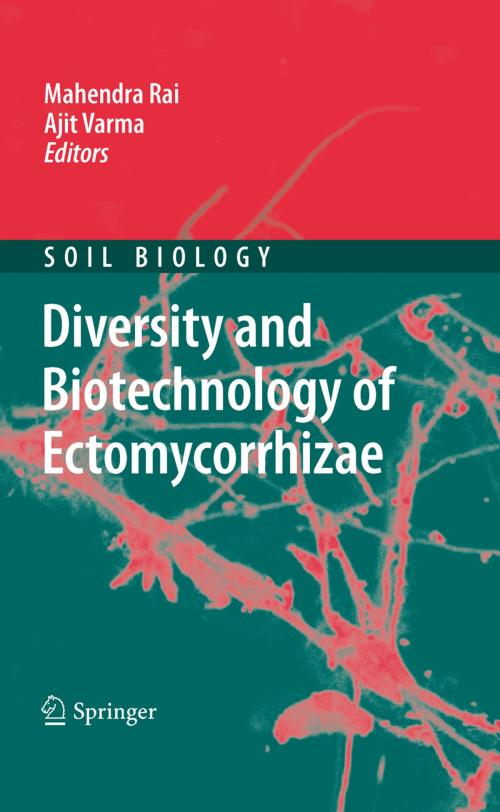Diversity and Biotechnology of Ectomycorrhizae
Nonfiction, Science & Nature, Technology, Agriculture & Animal Husbandry, Nature, Environment, Environmental Conservation & Protection| Author: | ISBN: | 9783642151965 | |
| Publisher: | Springer Berlin Heidelberg | Publication: | November 15, 2010 |
| Imprint: | Springer | Language: | English |
| Author: | |
| ISBN: | 9783642151965 |
| Publisher: | Springer Berlin Heidelberg |
| Publication: | November 15, 2010 |
| Imprint: | Springer |
| Language: | English |
Ectomycorrhizal fungi play multifunctional roles during symbioses with higher plants. They can serve as bioprotectors, biofertilizers, bioremediators and stress indicators. Further, they are the true “mycoindicators” of forest ecosystems, where an enormous diversity of ectomycorrhizal fungi can be found. Some ectomycorrhizal fungi also produce edible sporocarps, i.e., fruiting bodies, which are important for the food industry. Ectomycorrhizal fungi also produce various metal chelating molecules, which are of remarkable biotechnological significance and which also secrete useful secondary metabolites. Molecular approaches are required for the identification and differentiation of fungi forming symbioses with higher plants, while molecular tools are important to understand how genes are expressed during symbiosis with higher plants. Students, researchers and teachers of botany, mycology, microbiology, forestry, and biotechnology will find a valuable source of information in this Soil Biology volume.
Ectomycorrhizal fungi play multifunctional roles during symbioses with higher plants. They can serve as bioprotectors, biofertilizers, bioremediators and stress indicators. Further, they are the true “mycoindicators” of forest ecosystems, where an enormous diversity of ectomycorrhizal fungi can be found. Some ectomycorrhizal fungi also produce edible sporocarps, i.e., fruiting bodies, which are important for the food industry. Ectomycorrhizal fungi also produce various metal chelating molecules, which are of remarkable biotechnological significance and which also secrete useful secondary metabolites. Molecular approaches are required for the identification and differentiation of fungi forming symbioses with higher plants, while molecular tools are important to understand how genes are expressed during symbiosis with higher plants. Students, researchers and teachers of botany, mycology, microbiology, forestry, and biotechnology will find a valuable source of information in this Soil Biology volume.













![Cover of the book The Double [3+2] Photocycloaddition Reaction by](https://www.kuoky.com/images/2011/august/300x300/9783642228605-KHGG_300x.jpg)

